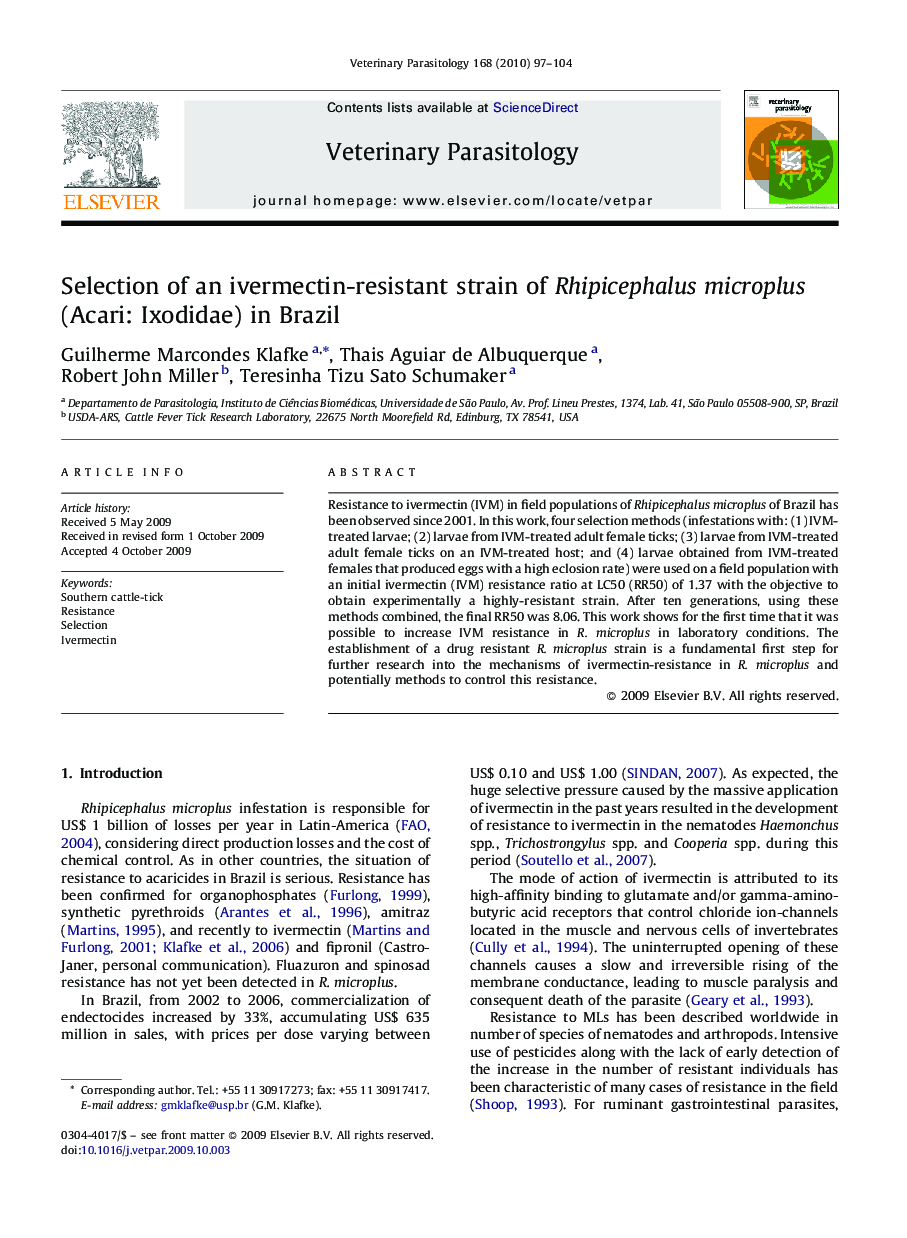| Article ID | Journal | Published Year | Pages | File Type |
|---|---|---|---|---|
| 2470840 | Veterinary Parasitology | 2010 | 8 Pages |
Resistance to ivermectin (IVM) in field populations of Rhipicephalus microplus of Brazil has been observed since 2001. In this work, four selection methods (infestations with: (1) IVM-treated larvae; (2) larvae from IVM-treated adult female ticks; (3) larvae from IVM-treated adult female ticks on an IVM-treated host; and (4) larvae obtained from IVM-treated females that produced eggs with a high eclosion rate) were used on a field population with an initial ivermectin (IVM) resistance ratio at LC50 (RR50) of 1.37 with the objective to obtain experimentally a highly-resistant strain. After ten generations, using these methods combined, the final RR50 was 8.06. This work shows for the first time that it was possible to increase IVM resistance in R. microplus in laboratory conditions. The establishment of a drug resistant R. microplus strain is a fundamental first step for further research into the mechanisms of ivermectin-resistance in R. microplus and potentially methods to control this resistance.
